The Huawei P8 Review
by Andrei Frumusanu on June 4, 2015 8:00 AM EST- Posted in
- Smartphones
- Huawei
- Mobile
- P8
- Kirin 930
GPU Performance
On the GPU side, HiSilicon continues to rely on what is by now a quite old IP in the form of the ARM Mali T628. This is the same MP4 GPU configuration found in the Hi3630 (Krins 920's) of last year, and saw little change other than a small 80MHz boost in clocks to 680MHz. The Honor 6 and Mate 7 already disappointed in GPU performance, and we're not expecting the P8 to have any large gains over those predecessors.
We start off with 3DMark 1.2 Unlimited, which has both a graphics heavy test as well as a combined GPU and CPU heavy test.
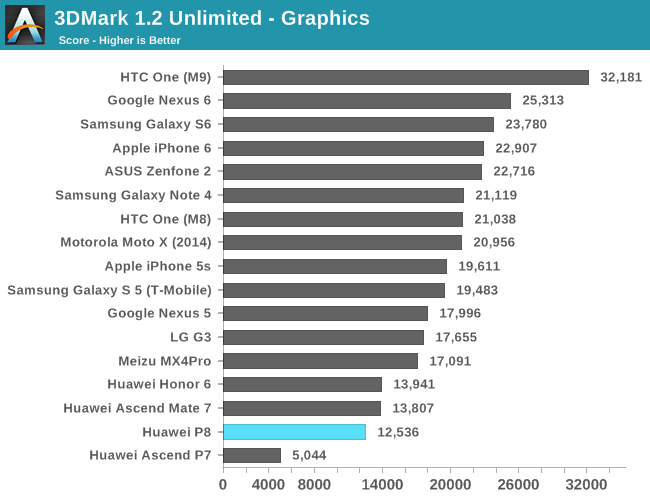
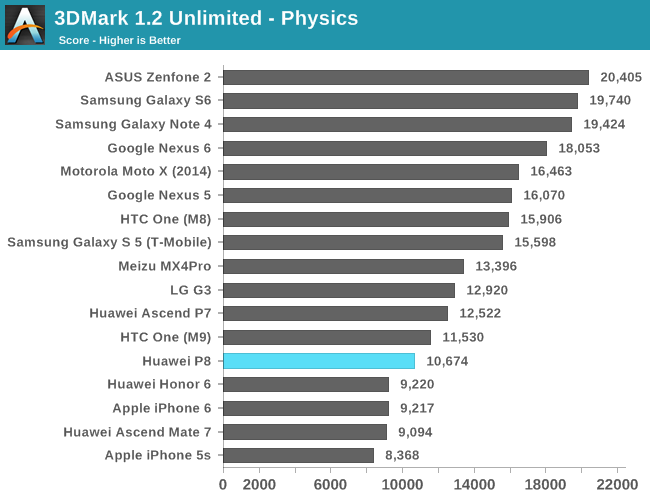
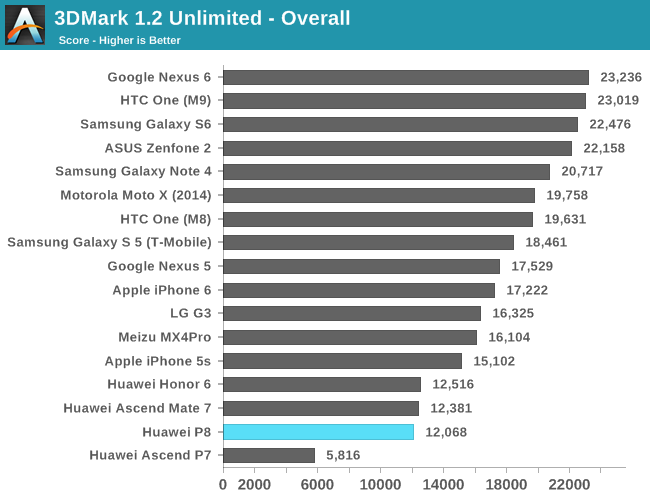
The P8 performs as expected, as it struggles to keep up with the competition. Interestingly, it performs worse than the Kirin 920 even though it's clocked higher than its counter-part, pointing out that the weaker CPU actually might be limiting the graphics performance.
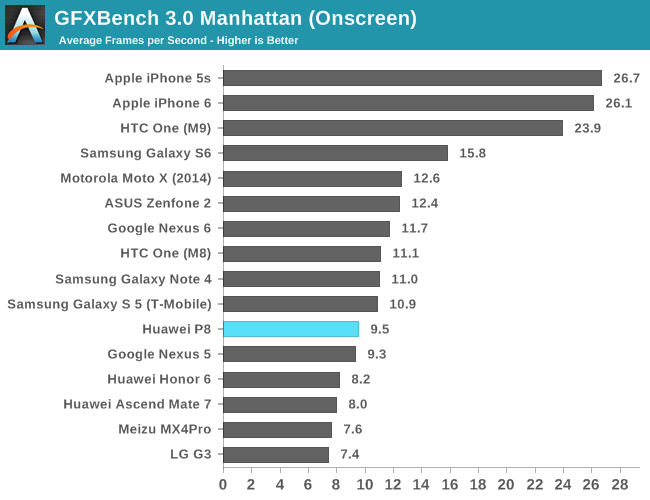
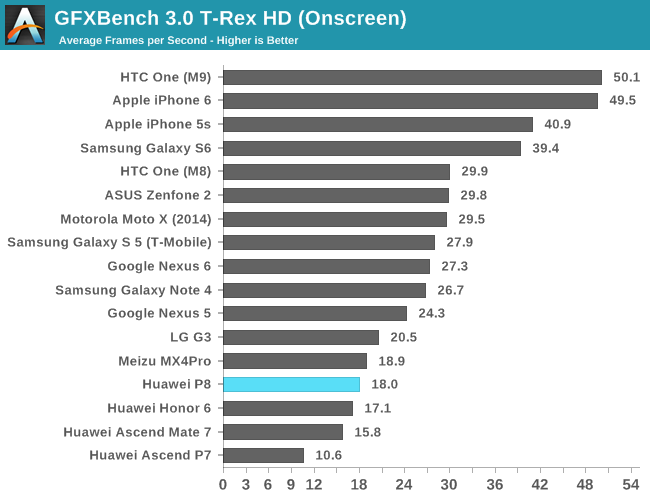
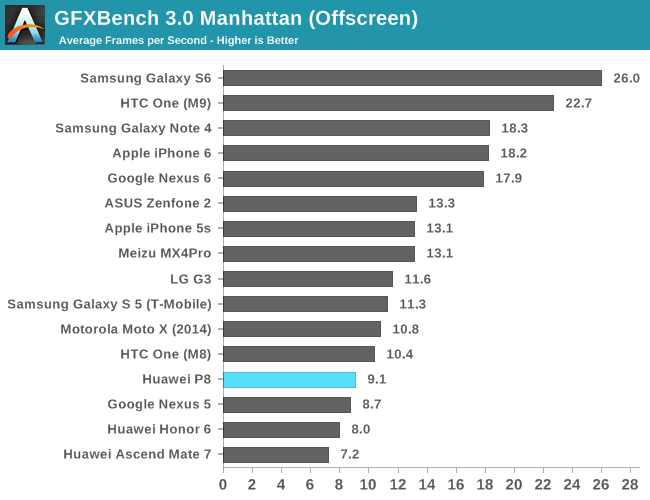

GFXBench is a more CPU-light benchmark and we see the P8 correctly outperform the Honor 6 & Mate 7 as one would expect it to. Again, we see very bad performance for a 2015 flagship as the P8 still can't match up to devices released 18 months ago.
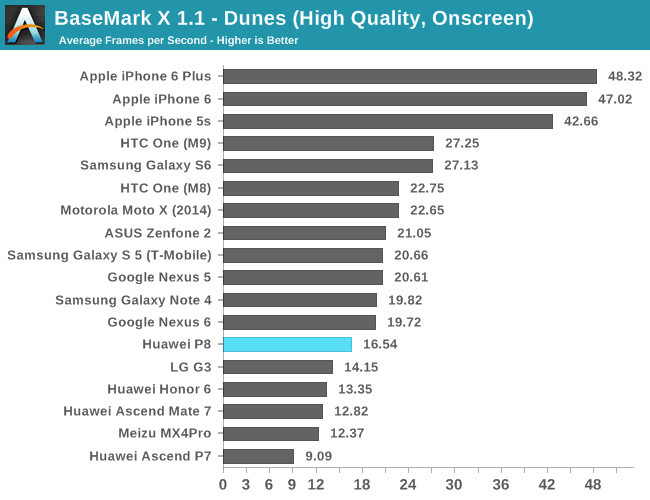
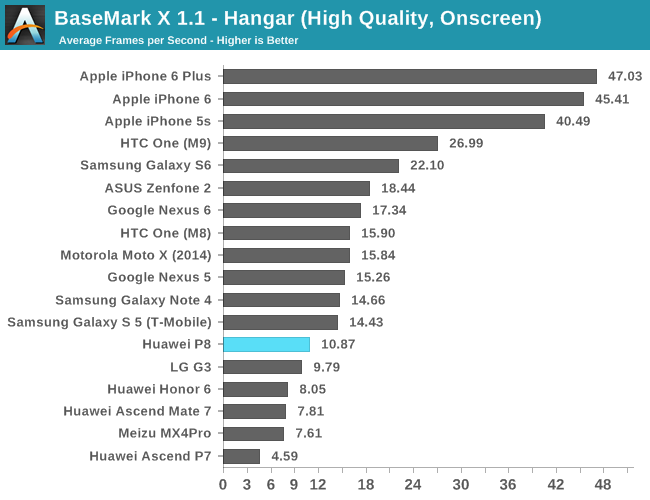
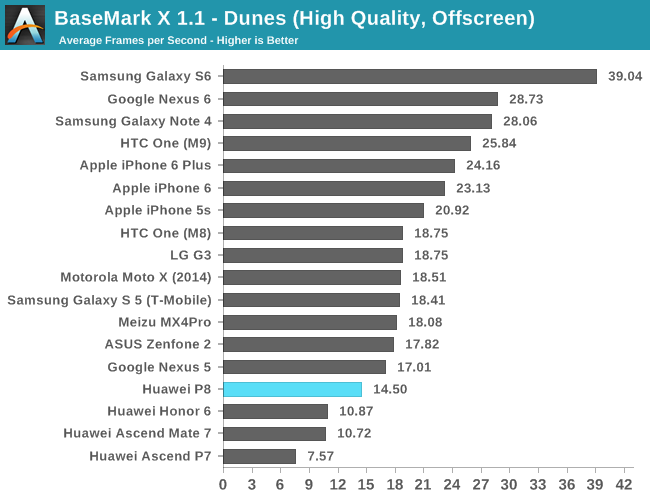
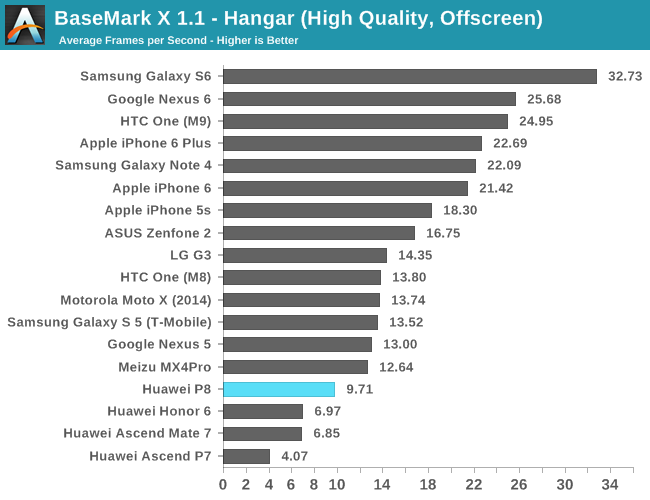
BaseMark X paints a similar picture as GFXBench. There's not much we can say to make the scores seem better for the P8, as the GPU remains very underwhelming.
GPU Power
While I mentioned in the introduction that I wasn't able to properly dismantle the P8 without damaging it, I did try to get some numbers through the internal fuel-gauge. While these numbers are definitely not as precise as measuring directly on the hardware and should be taken with a grain of salt, they nevertheless give us a good reference point and estimate on how the SoC fares.
The P8 seems to consume around 3.7W of load power in the T-Rex Offscreen test. As a reminder, under the load power metric we understand the resulting difference of the total power of the device subtracted by the average power the device consumes in its idle state. This is done to be able to compensate for the various screen sizes and their efficiency, and to cancel out power other eventual passive platform components.
3.7W is still sadly too high from what a smartphone SoC should be allowed to dissipate in normal conditions and will lead to unavoidable thermal throttling as we see in the battery rundown log:
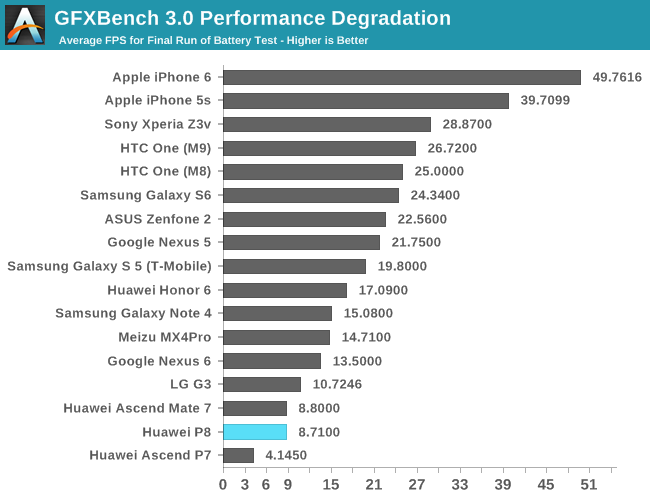
The P8 doesn't even manage to keep its top frequency for more than a single run, and after 7 minutes it settles down and between 50% and 40% of maximum frequency. The end performance degradation value comes in at 8.71fps, a result ironically beat only by last year's Ascend P7's and the Kirin 910T.
| T-Rex Offscreen Power Efficiency (Load Power) | ||||||
| Mfc. Process |
FPS | Avg. Power | Perf/W | |||
| Exynos 7420 (S6) | 14LPE | 56.3 | 4.82W | 11.63 fps/W | ||
| MT6595 (MX4) | 28HPM | 23.3 | 2.42W | 9.55 fps/W | ||
| Exynos 5430 (MX4Pro) | 20LPE | 28.7 | 3.55W | 8.08 fps/W | ||
| Exynos 5433 (Note 4) | 20LPE | 37.3 | 5.35W | 6.97 fps/W | ||
| Exynos 5430 (Alpha) | 20LPE | 31.3 | 4.88W | 6.41 fps/W | ||
| Kirin 930 (P8 Estimated) | 28HPM | 17.0 | 3.69W | 4.60 fps/W | ||
When looking at SoC power efficiency under 3D load that we've tested over the last few months we see that the Kirin 930 ends up in quite a dire situation as it gets beat by all other SoCs we currently have data on.
HiSilicon needs to invest in more silicon area and adopt higher GPU core numbers to be able to run at lower frequencies and lower voltages if it wants to stay competitive in graphics performance. It's weird to see the stark contrast of HiSilicon's current 28nm 4-core silicon versus Samsung's 14nm 8-core in the Galaxy S6, with both devices coming out in the same time-frame and both of them essentially employing the same GPU IP family.
It will be interesting to see how Huawei can take advantage of the next generation manufacturing processes as future Kirin SoCs are expected to be made in TSMC's 16nm FinFET node.


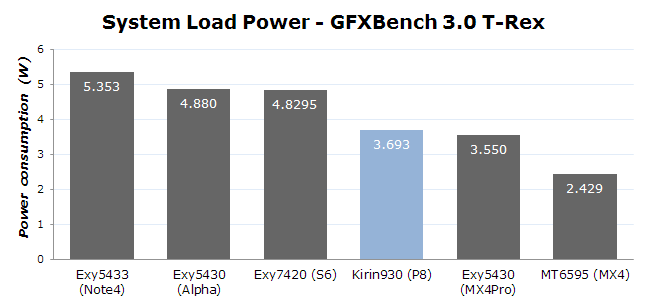
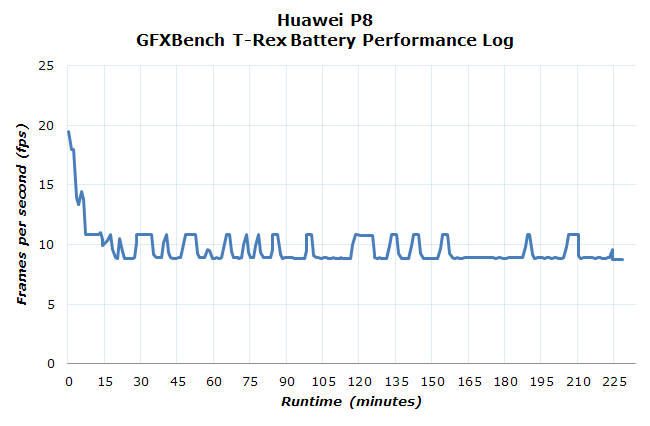








104 Comments
View All Comments
lilmoe - Thursday, June 4, 2015 - link
You guys have probably covered this, but why is UFS on your charts not showing the speed bumps it's showing in benchmarks on other sites? Is it a benchmark software issue, or is that the actual speed you're achieving?tipoo - Thursday, June 4, 2015 - link
One of their previous reviews said they were using an older test that only used a single thread to address IO, which gimped the UFS in the Galaxy S6. I'm not sure if they're still doing that.I don't think they should though - they said it was because the iPhones test was single threaded, but that's not the tests problem, HFS+ only allows one IO thread to access the file system at a time. Dumb for a file system in 2015, but there it is.
JoshHo - Thursday, June 4, 2015 - link
In the time since the Galaxy S6 review we've discussed the effects of multithreaded IO and it has become apparent that this ends up impacting normal eMMC results in an unrealistic manner due to controller overhead as IO in real world applications is treated as a critical section. Combined with the need to maintain comparable tests across Android and iOS, we've decided to continue focusing on single threaded IO performance for internal storage testing.Brakken - Friday, June 5, 2015 - link
I don't understand what you wrote except that the GS6 multithreading is a dog's breakfast. Is this correct?tipoo - Wednesday, June 10, 2015 - link
That's not what he was getting at. Just that multithreaded I/O requests benefit the GS6 UFS flash system while hurting the performance of every other phone, so they decided to stay with the older single threaded test.der - Thursday, June 4, 2015 - link
YESSSSSSSSSSSSSSSSSSSSSSSSLONG AWAITED REVIEW!
tipoo - Thursday, June 4, 2015 - link
Looks like another disappointment from them. Shame, it's gorgeous on the outside, but I wish they'd just go with another SoC maker until they can produce something decent. Heck, go with Intel, the Z3560 in the Zenfone 2 both stomps this and comes practically free.daar - Thursday, June 4, 2015 - link
Why no comparison with the iPhone 6? Isn't it generally the reference phone for photos?That said I disagree with the P6 low light performance, the greater noise is more of a problem overall than the odd slight smudging in the S6. For example, in the picture with the streets and car, you can easily make out the license plates with the S6, on the P6 you can't.
Andrei Frumusanu - Thursday, June 4, 2015 - link
I currently don't have an iPhone 6 to use as a reference phone, so the S6 had to make due.Ethos Evoss - Friday, June 12, 2015 - link
so why u putting it in your weird graphs and charts ? all fake ! as I said !